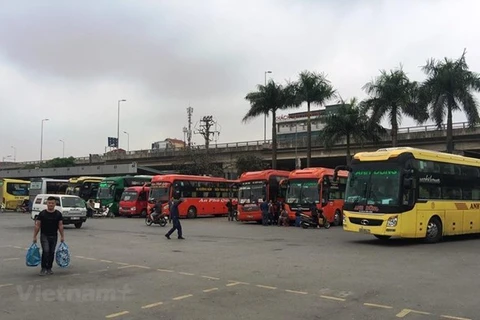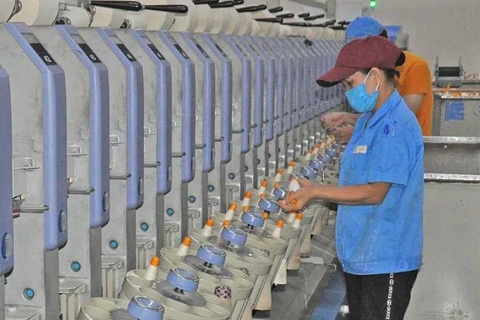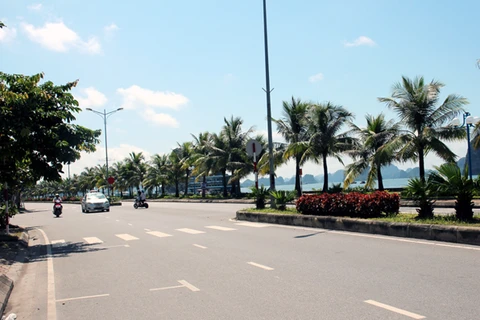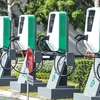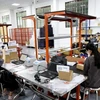Quang Ninh (VNA) - Hit hard by a resurgence of COVID-19 in the first quarter, the northern province of Quang Ninh nonetheless posted gross regional domestic product (GRDP) growth of 9.02 percent, or double the national average, data shows.
This gives the province second place in terms of GRDP growth in the northern key economic region, following the neighbouring city of Hai Phong.
The main growth driver in the first three months was the processing and manufacturing sector, which increased 35.6 percent compared to 20.8 percent in the same period last year.
That contributed to a record industrial growth of 8.73 percent in January-March.
Meanwhile, stable growth in agriculture, forestry, and fisheries made up for contractions in other sectors, including tourism, which nosedived almost 50 percent in visitor number and revenue during the period.
Quang Ninh managed to contain the COVID-19 outbreak in the shortest possible time. Within only a week from the first local infection being reported in late January, it had completely brought the situation under control, thus minimising the socio-economic impact and stabilising production and business.
Secretary of the provincial Party Committee Nguyen Xuan Ky said the achievements in Q1 are a major source of encouragement for Quang Ninh to achieve the twin targets of fighting COVID-19 and boosting socio-economic development to post double-digit GRDP growth this year.
The province has set a goal to have modern industry and service sectors and become one of the region’s comprehensive and dynamic development hubs by 2025, which is part of growth targets of the province for 2020 – 2025, which were outlined in the resolution of the 15th provincial Party Congress, which took place from September 25 – 27 last year.
The other goals included building strong and transparent Party and political apparatus; promoting unity, democracy, discipline, and innovation; mobilising concerted efforts for sustainable socio-economic development; and ensuring defence and security.
Regarding economic growth, the province aims to increase its GRDP by 10 percent on an annual average during the period, and the per capita GRDP to over 10,000 USD by 2025. The urbanisation rate is expected to surpass 75 percent, while the rate of poor households to go down to below 1 percent. Quang Ninh will work to maintain its leading position nationwide concerning the provincial competitive index (PCI), public administration reform (PAR) index, Satisfaction Index of Public Administration Services (SIPAS), and Public Administration Performance Index (PAPI). By the end of 2030, the province targets to complete the new-style rural area building task.
Quang Ninh posted an estimated GRDP growth rate of 10.05 percent in 2020 despite the adverse impact of COVID-19.
In 2021, the province aims to maintain its GRDP growth rate at more than 10 percent and total state budget revenue of over 51 trillion VND.
Over the past five years, it has experienced high and sustainable growth, with an average annual growth rate of 10.7 percent. Average GRDP per capita is estimated at 6,700 USD in 2020, two times higher than the country’s average figure.
The province topped the PCI rankings for the third year in a row in 2019, according to the PCI 2019 report from the VCCI.
In addition to the PCI, Quang Ninh also led the country in the PAR Index for three consecutive years, in 2017, 2018, and 2019. The province has also been among the best performers in terms of the SIPAS for many years and rose to the top in 2019.
It has also made great strides forward in improving governance and public administration capacity, moving from the 62nd place in 2016 to third in Vietnam’s 2019 PAPI list./.



